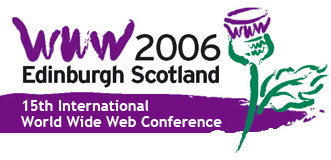

|
|
Capturing the Essentials of Federated Systems
Track: Posters Among the various aspects of Web applications that are subject to modeling, like navigation, interaction or business processes, the architectural aspect is receiving growing attention. This is related to the fact that the Web is increasingly used as a platform for distributed services which transcend organizational boundaries to form so-called federated applications. In this context, we use the term 'architecture' to denote the composition of the overall solution into individual Web applications and Web services that belong to different parties and invoke each other. The design and evolution of such systems calls for models that give an overview of the federation structure and reflect the technical details of the various accesses. At the same time, the complexity of the involved technology has to be dealt with so that the actual matter of interest is not obscured. Moreover, the dynamic nature of Web-based federations requires approaches that go beyond merely supplying one-time static descriptions. We introduce the WebComposition Architecture Model (WAM) as an overall modeling approach tailored to aspects of highly distributed systems with federation as an integral factor. WAM consists of a graphical notation, a framework for model extensions, a machine-readable modeling language and runtime support systems. Other items being presented by these speakers |
Platinum SponsorsSponsor of The CIO Dinner |
 |